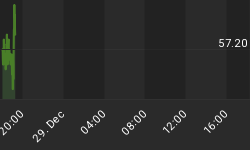For the 12th week in a row the "dumb money" indicator remains neutral on the markets, and the "smart money" indicator has had one moderately bullish reading over the past 19 weeks. Like the endless parade of Sunday night bailouts and "breaking news" stories, it is the same old, tired story that is not getting the market anywhere. The S&P500 is down 9% in the last 10 days and almost 14% year to date, yet these measures of investor sentiment still have not materially changed. Over this time period, I have contended that higher prices are not likely unless the "dumb money" becomes more bearish and the "smart money" gets more bullish, and the only way to accomplish this is for prices to continue lower.
Figure 1, a weekly chart of the S&P500, is the "Dumb Money" indicator. The "dumb money" looks for extremes in the data from 4 different groups of investors who historically have been wrong on the market: 1) Investor Intelligence; 2) Market Vane; 3) American Association of Individual Investors; and 4) the put call ratio.
Figure 1. "Dumb Money" Indicator
The "smart money" indicator is a composite of the following data: 1) public to specialist short ratio; 2) specialist short to total short ratio; 3) SP100 option traders. See figure 2.
Figure 2. "Smart Money" Indicator
A 9% drop in the S&P500 over the last 10 days qualifies as "very oversold", and with this in mind, there is a high likelihood of a "bounce" especially since prices are testing their November, 2008 lows. The bulls are counting on it. Nonetheless, the sentiment data suggests that there are still too many bulls on the wrong side of the trend for any meaningful bottom and sustainable rally to develop.















